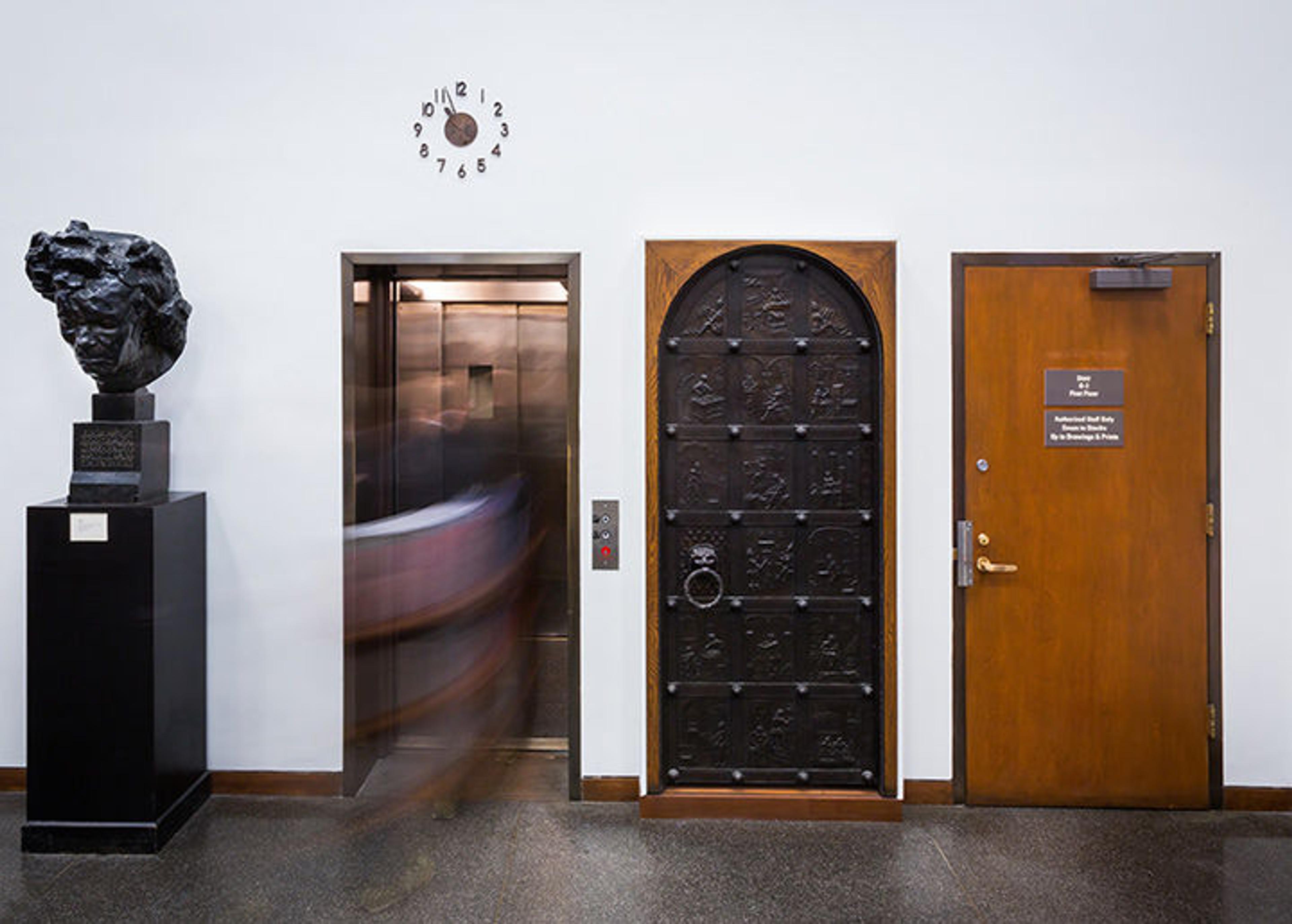
Samuel Yellin's Door and Key in Original Door Frame in Watson Library
«Watson Library visitors often express interest in this elaborate wrought-iron door installed in the Arthur K. Watson Reference Room. If you look at the door carefully, you will see that its vignettes illustrate traditional book arts trades, such as papermaking, bookbinding, and printing. This unique door was made at the firm Samuel Yellin Metalworkers in 1929 as part of a series of architectural elements created for the offices of the J. Walter Thompson Advertising Agency in New York. The door was made for the office of the Vice-President, John Broadus Watson.»

Samuel Yellin (American [born Russia], 1884–1940). Door and Key in Original Door Frame, 1929. Wrought iron and wood, 81 x 32 3/8 in. (205.7 x 82.2 cm). The Metropolitan Museum of Art, New York, Gift of J. Walter Thompson USA, in honor of the 75th anniversary of The American Wing, 1999 (1999.175.1, .2)
Samuel Yellin (1884–1940) was a prolific designer of decorative iron and metal work and a prominent figure in the early 20th-century American Arts and Crafts movement. Yellin was born in Mogilev, Russia, where he completed his metalsmithing apprenticeship between the ages of 11 and 16. Following his training, Yellin traveled throughout Europe and England before immigrating to the United States in 1906. He settled in Philadelphia, where he found a position teaching ironwork at the Philadelphia Museum School of Industrial Art.
Yellin opened his own business in 1908, eventually setting up a forge in a new building on Arch Street. During the building boom of the 1920s, Yellin employed up to 13 draftsmen and over 200 workers. The company's handiwork can be found at some of the finest institutions and residences in the United States. An extensive commissions list is published in the book Samuel Yellin, Metalworker, and includes commissions for the Federal Reserve Bank of New York, Yale and Princeton Universities, Washington National Cathedral, and many other prominent institutions.[1]

Yellin at his Arch Street shop in 1927. From Jack Andrews, Samuel Yellin, Metalworker (Ocean City, MD: Skipjack Press, Inc., 1992).
Yellin's firm had a long association with The Met, beginning in the 1930s when Yellin supplied medieval-style railings, grilles, gates, and other architectural hardware for the new Cloisters building. The blog post "Samuel Yellin and the 'Poetry and Rhythm of Iron'" by Christina Alphonso describes this work. After Yellin's death, the Museum acquired over 100 additional works from his studio and private collection of historic ironwork, some of which are on display in galleries 701 and 774 of The American Wing.

Samuel Yellin (American [born Russia], 1884–1940). Grille [Prototype for Ceiling Grille for Pierpont Morgan Library Annex], ca. 1928. Wrought iron, 33 1/8 x 34 1/2 x 2 13/16 in. (84.1 x 87.6 x 7.1 cm). The Metropolitan Museum of Art, New York, Gift of The Samuel Yellin Collection, 1994 (1994.599.2).
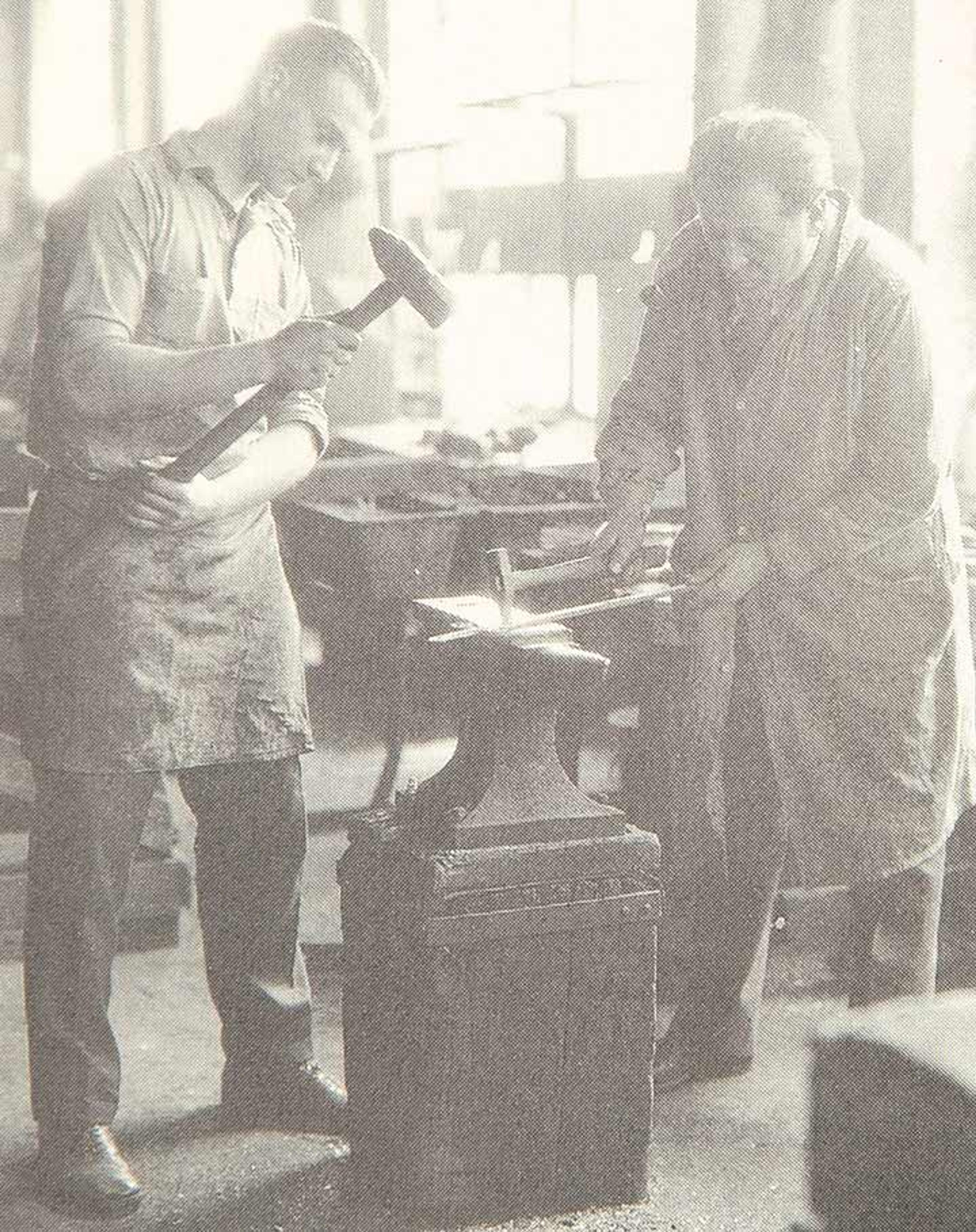
Yellin working with his striker (forging assistant) to prepare a demonstration piece at Arch Street forge, 1927. From Samuel Yellin, Metalworker
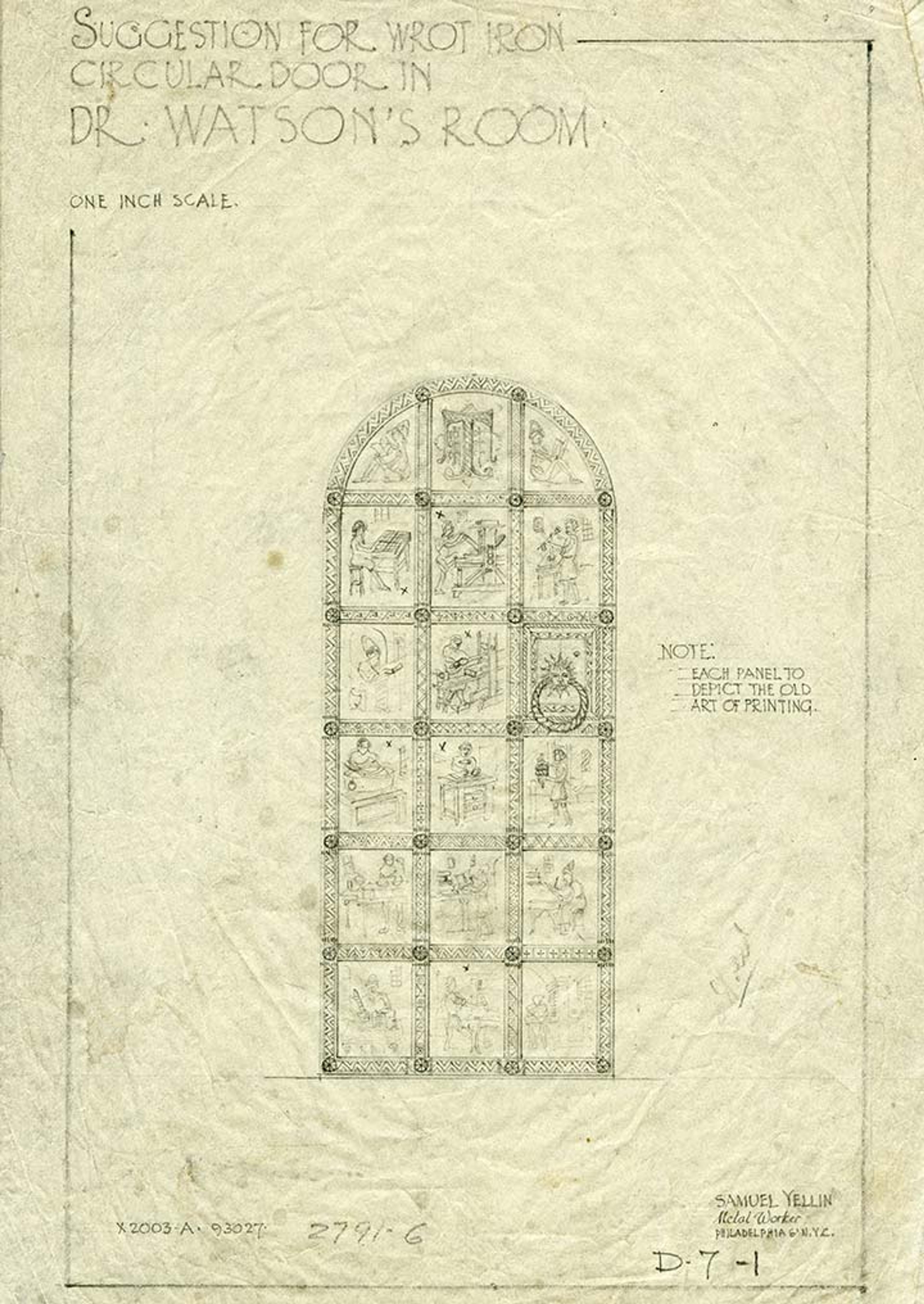
Suggestion for wrought iron circular door in Dr. Watson's Room. Job 2791. April 1928. This design drawing shows the intended location for the door and a note describing the design motif "each panel to depict the old art of printing." Close scrutiny reveals that it is not quite the same as the finished product. Samuel Yellin Collection, The Architectural Archives, University of Pennsylvania
The Door
The wrought-iron, repoussé (hammered in relief from the back) book arts door in Watson Library is one of only a few narrative doors designed by Yellin. Another door depicts the metalworking trades and was made for Samuel Yellin's office at the Arch Street building. Its complexity and beauty attest to the fine craftsmanship for which the Yellin studio was known. The commission is said to have been executed by an Austrian artist in Yellin's employ, known only as Mr. Winze.
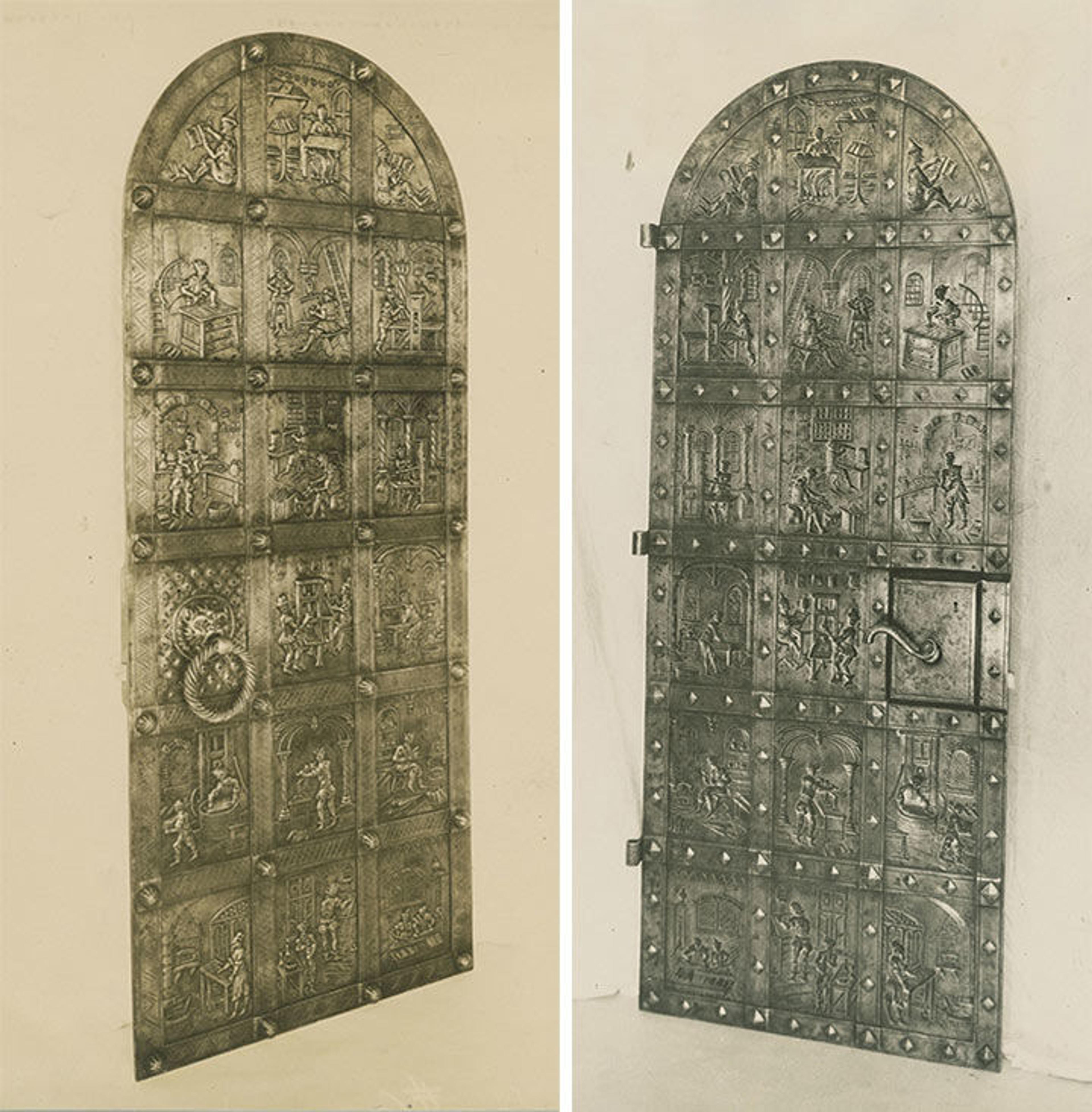
These high-contrast photos of the door show the repoussé work clearly. The photo of the back of the door (right) shows the added incised details, which were necessary to make the figures readable from the back of the work. (Unfortunately, the back of the door cannot currently be seen, as the door is mounted to the wall.) Samuel Yellin Collection, The Architectural Archives, University of Pennsylvania
As a student of ironworking history and technique, Yellin collected examples of historic metalwork and rare art books. Clare Yellin, Samuel's granddaughter, told The Met that her grandfather's library included research materials on medieval art, the Italian Renaissance, Spanish art, the French Enlightenment, Art Nouveau, the Arts and Crafts movement, the history of ornament, and pattern books. These sources may have been used by Yellin and Mr. Winze for the design of this door, as the images depicted on the door are derived from early books and prints.
My brief study of the door indicates that the pictorial panels are based on 15th- and 16th-century prints of the book art trades. Three of the panel designs—"The Printer" (sixth row, right), "The Papermaker" (fifth row, left), and "The Bookbinder" (third row, center)—are variants of designs found in Das Ständebuch, a book of contemporary trades published in 1568 by the Frankfurt publisher Sigmund Feyerabend (German, 1528–90) and illustrated with woodcuts by Jost Amman (German [born Switzerland], 1539–91).[2] Comparisons of the three Amman prints and door details show the obvious connections.
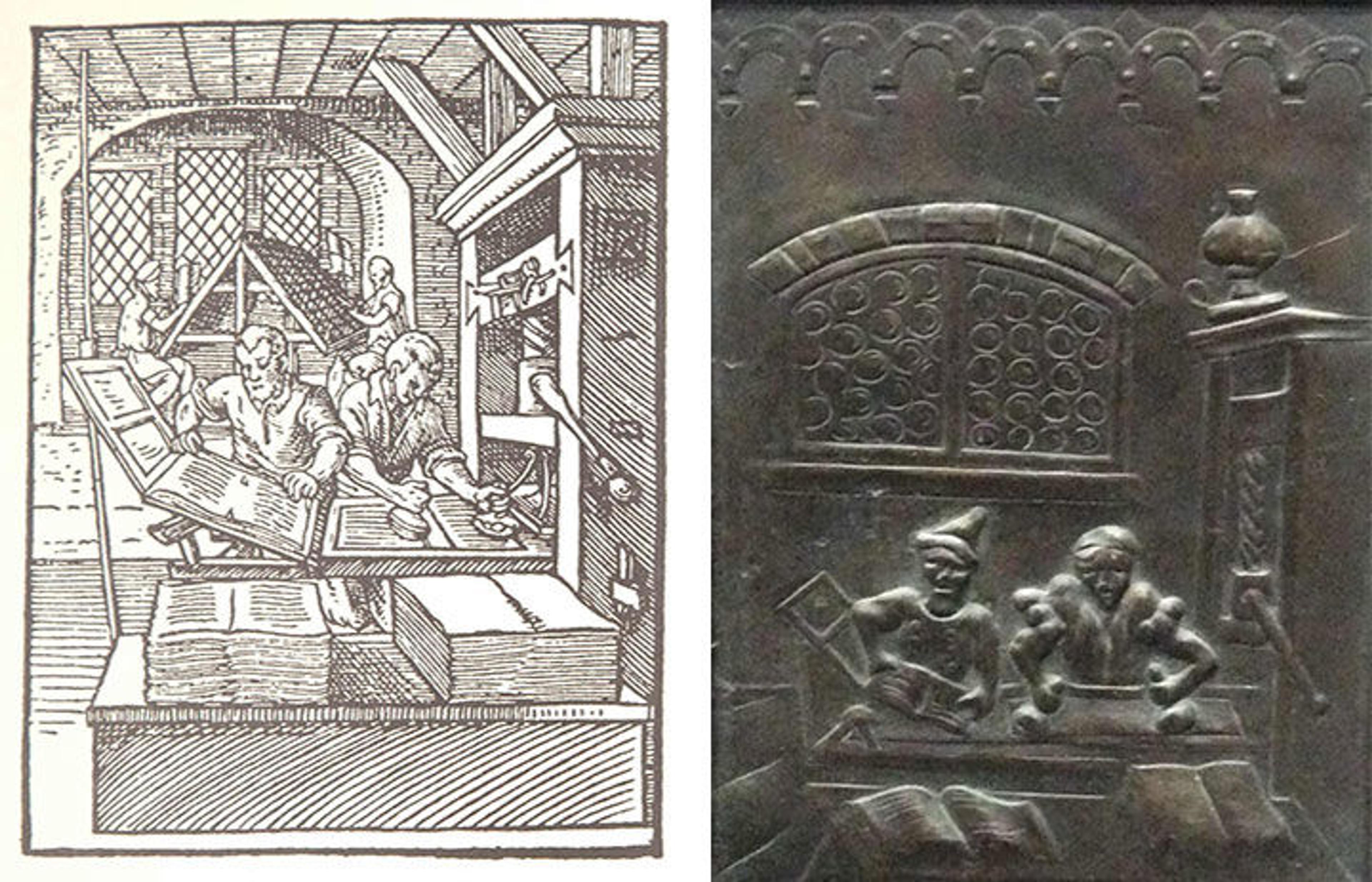
Left: Illustration of printers by Jost Amman. Right: "The Printer" panel of the Yellin door
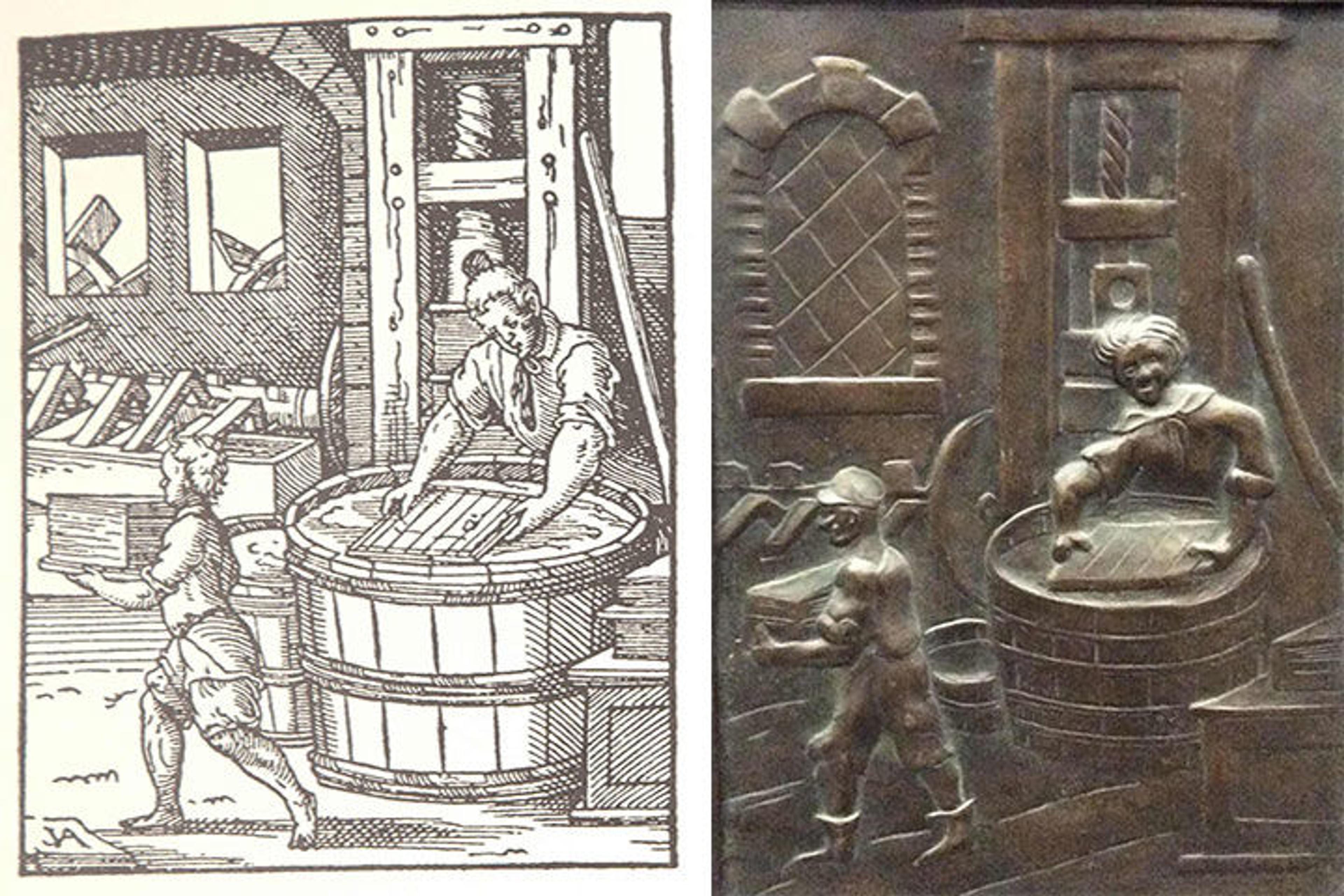
Left: Illustration of printers by Jost Amman. Right: "The Papermakers" panel of the Yellin door

Left: Illustration of printers by Jost Amman. Right: "The Bookbinder" panel of the Yellin door
Other panels on the Yellin door are probably modeled on other prints. For example, a close look illuminates similarities between the figures and activities in the two Collaert prints shown below and the Yellin door vignettes.
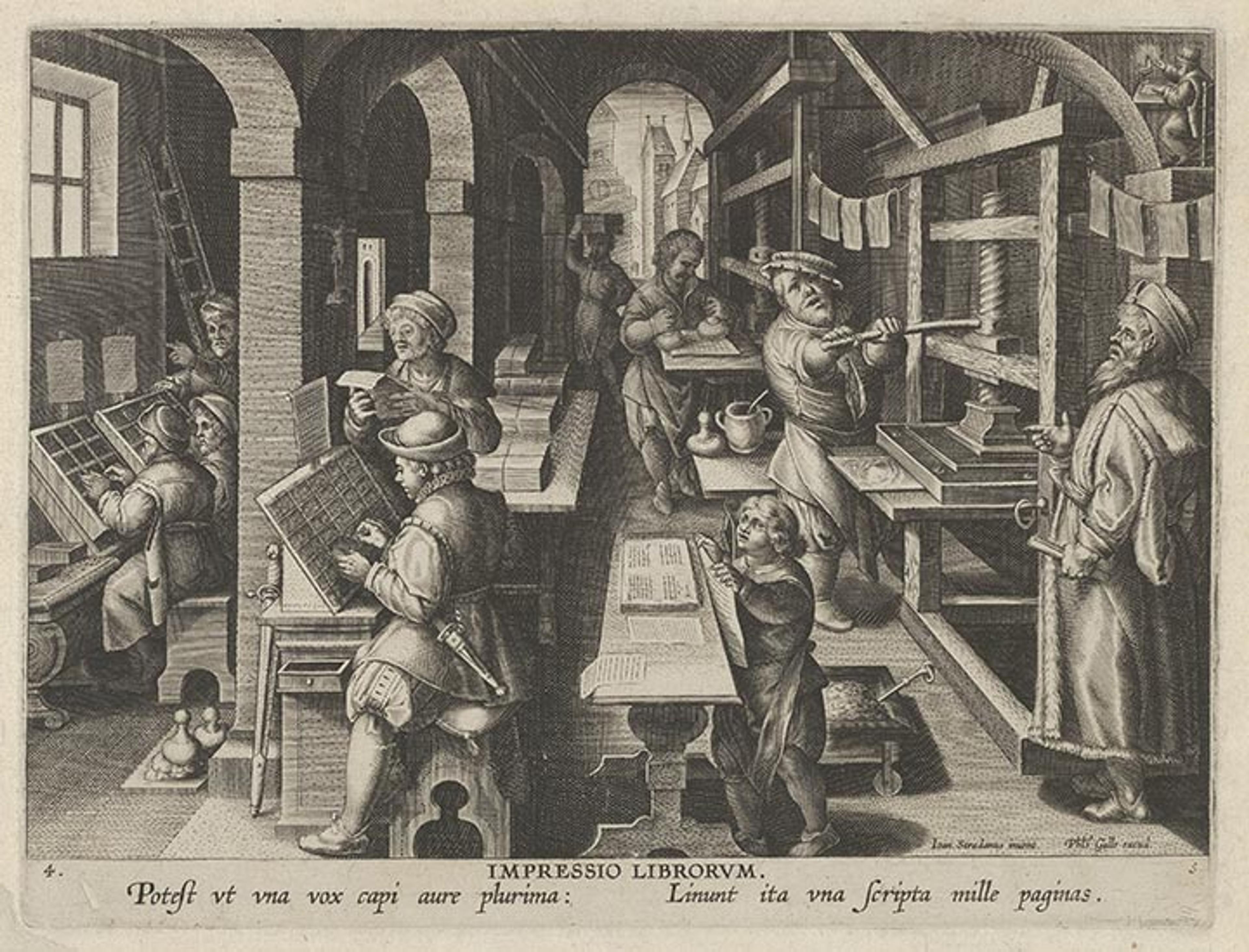
Jan Collaert I (Netherlandish, ca. 1530–81). New Inventions of Modern Times. [Nova Reperta], The Invention of Copper Engraving, plate 4, ca. 1600. Engraving, 10 5/8 x 7 7/8 in. (27 x 20 cm). The Metropolitan Museum of Art, New York, Harris Brisbane Dick Fund, 1934 (34.30[5])
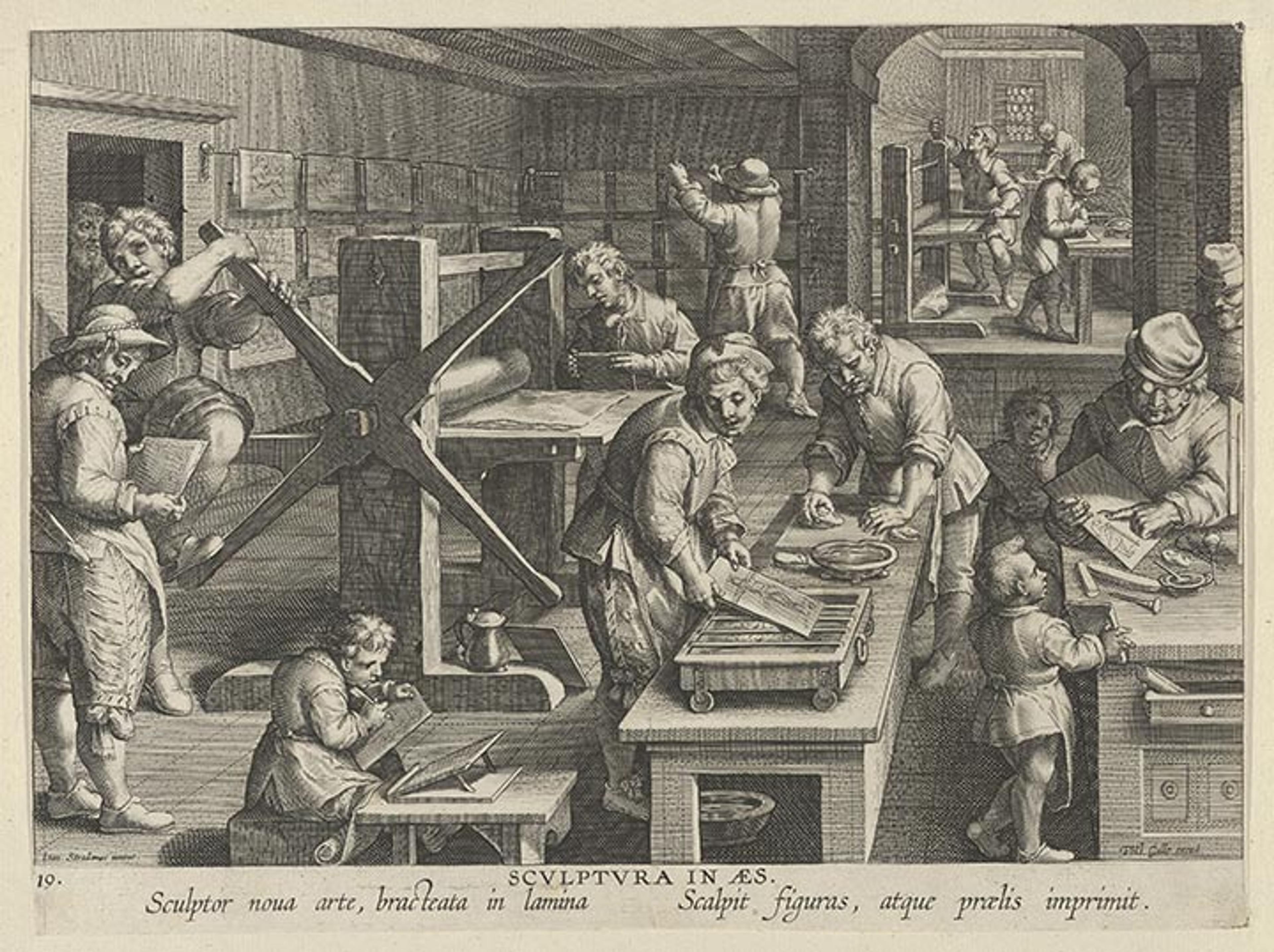
Jan Collaert I (Netherlandish, ca. 1530–81). New Inventions of Modern Times. [Nova Reperta], The Invention of Copper Engraving, plate 19, ca. 1600. Engraving, 10 5/8 x 7 7/8 in. (27 x 20 cm). The Metropolitan Museum of Art, New York, Harris Brisbane Dick Fund, 1934 (34.30[5])
Museum visitors and lovers of the book arts can take a closer look at the door and enjoy its virtuosity and connection to the book arts. Yellin, a talented and passionate craftsman, passed his love of ironwork to his children and grandchildren, who still operate his business today. His abiding passion for his craft can be best expressed in his own words:
I love iron; it is the stuff of which the frame of the earth is made. And you can make it say anything you will. It eloquently responds to the hand, at the bidding of the imagination. When I go to rest at night, I can hardly sleep because my mind is aswarm with visions of all the gates and grilles and locks and keys I want to do. I verily believe I shall take my hammer with me when I go, and at the gate of Heaven, if I am denied admission, I shall fashion my own key.
Notes
[1] Andrews, Jack, and Samuel Yellin. Samuel Yellin, Metalworker. Ocean Pines, MD: SkipJack Press, 2000.
[2] Rabb, Theodore K. A Sixteenth-Century Book of Trades. Das Standebuch. Palo Alto, CA.: The Society for the Promotion of Science and Scholarship, 2009.
Thanks to Femke Speelberg, associate curator in the Department of Drawings and Prints at The Metropolitan Museum of Art; Clare Yellin, who generously provided information and primary source material about the door for this post; and Heather Isbell Schumacher, C.A., Archivist, Architectural Archives, University of Pennsylvania; and Dr. Joseph Cunningham, who has been engaged in exhaustive research into Samuel Yellin for more than seven years and is at work on Samuel Yellin Metalworker, an exhibition and publication that will shed new light on Yellin and his extraordinary oeuvre .
Editor's note: This post was updated on August 24, 2017. A previous version of this article mistakenly identified Samuel Yellin's place of birth and the year he opened his business.